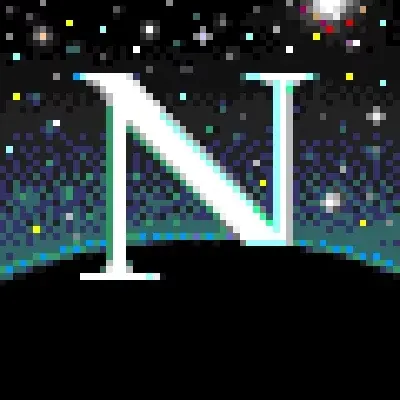Honestly back when I was a kid this is how I thought games were made, every possible image of a game was already saved and according to your input it just loaded the next image.
I stopped thinking that with 3d games
I thought that they were managing that stuff on a per-pixel basis, no engine, assets, or other abstractions, just raw-dogging pixel colors.
And before I even played video games at all I was watching somebody play some assassin’s creed game I think and I thought the player had to control every single limb qwop-style.
Apparently ai is learning to do that first thing you said about pure pixel management. It’s crazy that it works at all
Even with 2D games that’s basically impossible. Only time it could work is with turn based games and then…you end up with this post lol.
I see you’ve never played “Dragon’s Lair”, where every scene was cell animated and the player “chose” the path that the animation would take.
That one ran on a laserdisc, right? Like a CAV disc so it could very quickly move the laser to one of a couple of places for basically a win/lose decision, overlaying some graphics over top for the game UI?
LOL, I’ve actually heard of it, but I have not played it. Ofc that game never even crossed my mind when writing my comment haha. I suppose choose your own adventure style books also fall into this category.
I remember having a thought one day as a young kid while interacting with a DVD main menu (the kind that had clips from the movie playing in the background, and would play a specific clip depending on what menu you went in to).
“This is basically how video games work, there’s a bunch of options you can choose from and depending on what you do it shows you something. Videogames are just DVD menus with way more options.”
I grew up to not be a programmer.
Instead you are a choose-your-own-adventure author
Close, I DM’ed a short-lived DnD campaign a year ago.
The game Myst actually worked kind of like a DVD menu with more options.
Its not terribly far off from pre rendered or FMV games like Myst are doing it.
It does work like that a little bit, like with sprites they’ve often hard-coded the frames of animation, so when you push a button it loads the correct image, like Mario’s jumping frame with his hand in the air. But there are such things as tilesets, and sprite positions, and all that good stuff.
Those shitty old tiger hand holds kind of worked like that.
I remember speculating as a (small) kid that the AI soldiers in Battlefront II’s local multiplayer might be real people employed by the developer. Not the brightest child was I.
I remember as a kid seeing my older brother talk to people on a mic and thought he was talking to the characters in the game
This is what I believed. And I tried to trick the game by doing movements and inputs no one could have planed. Never outdid that planning somehow. They were on to me!
I grew up mostly with the PS2 and above and I thought the same thing 😅. I did think there had to be a better way though
Programming chess as a single lookup table is wild
Right?
pretty sure there are more possible chess positions than atoms in the earth (universe?), so even if every atom of our planet were converted to transistors there’d be no way to fully represent all possibilities.
This was a fun one to look up. https://en.wikipedia.org/wiki/Shannon_number
It looks like the number of valid chess positions is in the neighborhood of 10^40 to 10^44, and the number of atoms in the Earth is around 10^50. Yeah the latter is bigger, but the former is still absolutely huge.
Let’s assume we have a magically amazing diamond-based solid state storage system that can represent the state of a chess square by storing it in a single carbon atom. The entire board is stored in a lattice of just 64 atoms. To estimate, let’s say the total number of carbon atoms to store everything is 10^42.
Using Avogadro’s number, we know that 6.022x10^23 atoms of carbon will weigh about 12 grams. For round numbers again, let’s say it’s just 10^24 atoms gives you 10 grams.
That gives 10^42 / 10^24 = 10^18 quantities of 10 grams. So 10^19 grams or 10^16 kg. That is like the mass of 100 Mount Everests just in the storage medium that can store multiple bits per atom! That SSD would be the size of a
smalllarge moon!Assuming your math is correct (and I have no reason to doubt that it is) a mass of 10^16 kg would actually be a pretty small moon or moderately sized asteroid. That’s actually roughly the mass of Mars’ moon Phobos (which is the 75th largest planetary moon in the Solar System).
I was thinking of 10^16kg diamond storage inside a larger SSD that’s the size of a large moon, similar to how a real SSD has data stored in tiny little slivers of silicon inside a much much larger device.
I should have explained that one better. It’s easy to imply such details to keep text shorter.
Out of curiosity, why did you say planetary moon? Is there any other kind?

i think you did the weight approximation in the wrong order, 1024 is a lot bigger than 6×1023. so you can probably double the final weight.
10^24 is a lot bigger than 6×10^23
Well yeah it’s almost double, but I wrote the comment as a mental estimation of the order of magnitude, so it doesn’t change the substance of the discussion.
I mean at the beginning I arbitrarily picked a number in that 10^40 to 10^44 range and that’s a factor of 1:10,000 rather than 1:2, lol.
Slightly less than double, actually. (Doesn’t really change the meat of the argument or anything though.)
yeah yeah, cosmological approximations and all that, but there’s still a bit of difference between “planetoid” and “gas giant” :P
valid chess positions is in the neighborhood of 1040 to 1044
Lol, big board you’re playing with…
A position is the arrangement of all the pieces on the board.
If you don’t limit it to valid positions/arrangements it’s like 10^120. Closer to the “number of X in the observable universe” caliber of number.
So I think I was wrong, but you are too lmao.
10120 is the number of valid game-trees, or valid ~80 move games.
The much smaller number I quoted above, though, IS the valid positions, I was thinking it was actually the trimmed down “truly valid” game-tree sequences.
Isn’t math fun? Limitless ways for us to be wrong!
I would have probably done it in my high school programming class to be funny and also fuck with my teacher, because they were an asshole.
This is very inefficient, they should be using a switch case.
For efficiency you should you GOTO, so you can join trees that end up in same position.
Like those create your own adventures books.
This is supposed to be a joke but sadly a lot of beginner tutorials on coding Tic-Tac-Toe teach this
AI has probably finished this game by now.
As a middle schooler I used Power Point to make FMV games for my friends and classmates, and it was basically this. Just, like, SO MANY slides
This is where you’d normally go “there must be a better way…”
This is a great advertisment for what real developers do. You shouldn’t just crank out the first idea that works. You should be doing something that is smarter and sensible.
Laughable for chess, but essentially how Steve Mould played tic tac toe using synthesized DNA.
Found the guy who passed the test with
printf (" *\n **\n ***\n ****\n*****\n);now implement castling in that
Well this is how programing works so if you don’t like it…
They are doing it dumb. You can text output chess but you just need to keep track of where the pieces are in code, then when you are ready to output, place the characters. Saves so much time. /s
not to get epistemological,
but I hate that technically there’s only a limited number of moves in chess, and therefore the best move is there, maybe there’s a strategic where white will always win, but we’ll never know because the number of variations likely is larger than atoms in the universe.
On the lower end of estimates, the number of unique chess board configurations is 10^120, often referred to as the Shannon number. The universe doesn’t stand a chance.
That’s cool. I think this is why I never liked chess.
maybe a distant future technology could compute that, Clarktech style
In modern chess, engines have gotten good enough that we generally do know the top moves and humans can’t beat them. We can even numerically assess someone’s chess play with a computer, which we call “accuracy”. Obviously they can always be improved further, and there are a handful of situations where they might misevaluate, but it’s still pretty incredible.
Engines have only made chess more exciting as they have shattered a lot of old theory and helped people find a lot of new and innovative ideas. They are an incredible aid in analysis and tournament prep.
yhea, but engines still act as if it is an unsolved game.
while in theory, given that the number of moves is limited, in theory one colour would always win.
The solution to chess is almost certainly a draw, since this is what all top engine chess converges to. Otherwise you are completely correct: chess is unsolved and will likely never be solved.
one AI that always manages to draw in chess is Stable diffusion and dalle…
/j
if that is python then makes sense
















